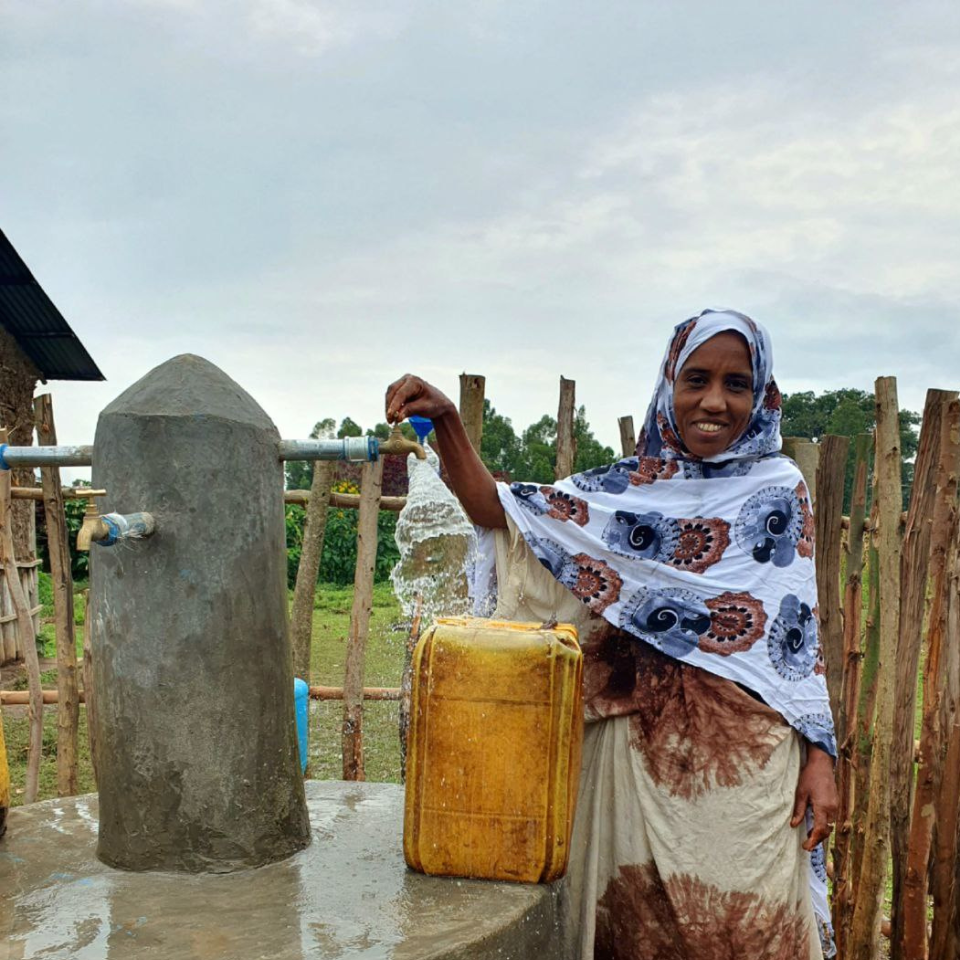At The Foundation, we work toward a world where no one is needlessly blind or vision-impaired, reflecting our commitment as a responsible global citizen.
Restoring sight transforms lives. It enables individuals and families to break out of poverty, return to work or school, and overcome the inequities, marginalization, and exclusion often perpetuated by blindness and vision loss.
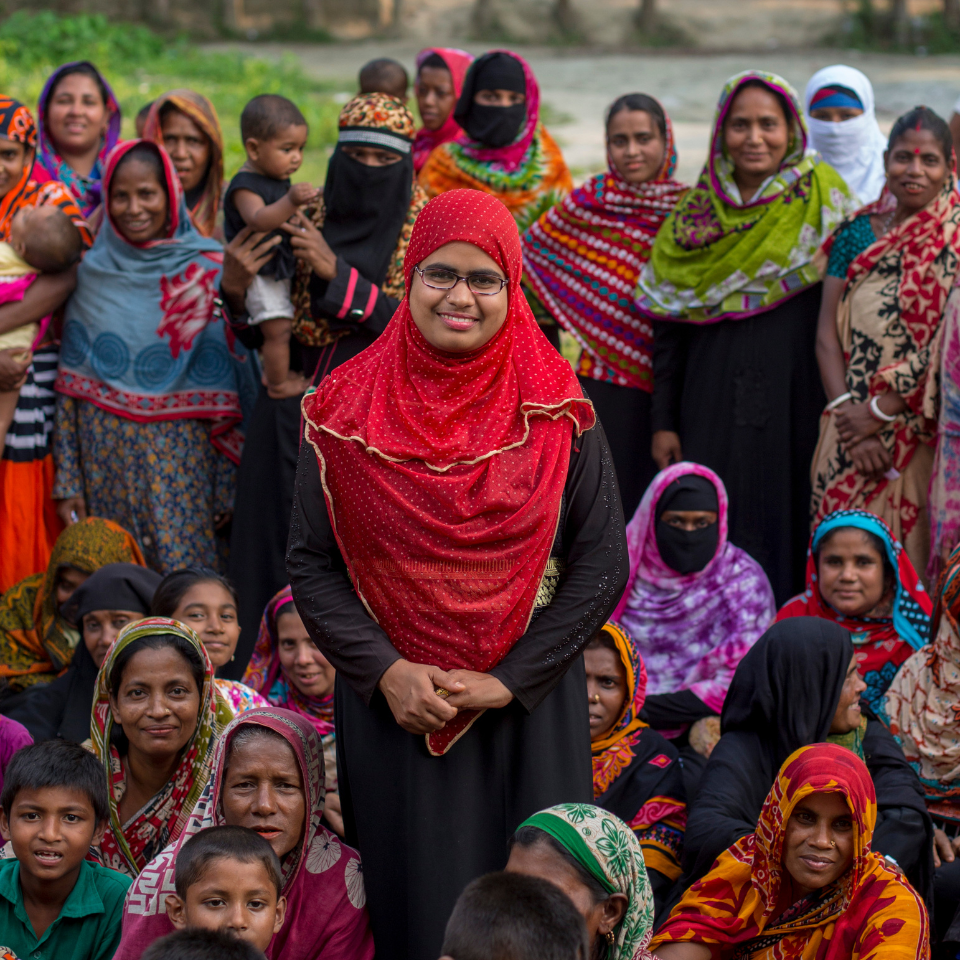
Download the full contribution report
We've produced a contribution report that reflects The Foundation's commitment to understanding our role within the SDGs and leading by example by publicly pledging to strengthen our engagement further.
The report describes our core contributions to specific SDG targets across The Foundation, illustrating how we impact real lives and providing public accountability for our actions in the coming years.
What are the Sustainable Development Goals (SDGs)?
The 2030 Agenda is defined by 17 goals, known as the Sustainable Development Goals (SDGs).
The SDGs succeed the Millennium Development Goals, apply to all countries, and will inform international aid and development agendas over the next decade.
The SDGs guide action and measure progress across a range of development priorities, reflecting the complex social, economic, and environmental factors that affect health and well-being at both individual and population levels.
Enabling the attainment of the SDGs
The Foundation focuses on developing eye health services and strengthening health systems, providing benefits far beyond improved health.
Vision is the primary sense we all rely on to engage with the world. How we live, create, and enjoy our daily interactions—whether personal, family, or professional—is exponentially more effective and possible with the gift of sight.
Currently, 43.3 million people worldwide are blind, and 1.1 billion live with some form of vision loss. About 90% of those affected live in low- and middle-income countries.
If we don’t act now, by 2050, over 61 million people are estimated to be blind due to a growing and aging population. However, we can fix this problem. Over 90% of vision loss is preventable or treatable, and we can address it through highly cost-effective interventions.
Providing these essential services at the scale needed delivers significant social and financial returns on investment while advancing the SDGs.
Good vision enables individuals and families to fully and meaningfully participate in work and education, helping to overcome the inequality and exclusion that blindness and vision impairment often perpetuate. The Foundation's work both impacts and is impacted by the pursuit of the SDGs.
What SDGs is The Foundation addressing?
The SDGs are indivisible – progress in one area can often catalyse success across others. The Foundation has a unique and critical contribution to make.
As an organisation with an eye health focus, our work is integral to the attainment of the targets contained within Goal 3: Ensure healthy lives and promote well-being for all at all ages.

However, the preeminence of sight and its critical enabling role in our everyday lives means that The Foundation’s sight-restoring work creates impact far beyond good eye health. Our work is a fundamental foundation for many of the 17 SDGs, most notably:
- Goal 1: End poverty in all its forms everywhere
- Goal 4: Ensure inclusive and equitable quality education and promote lifelong learning opportunities for all
- Goal 5: Achieve gender equality and empower all women and girls
- Goal 8: Promote sustained, inclusive and sustainable economic growth, full and productive employment and decent work for all
- Goal 10: Reduce inequality within and among countries
- Goal 12: Ensure sustainable consumption and production patterns
- Goal 17: Revitalize the global partnership for sustainable development
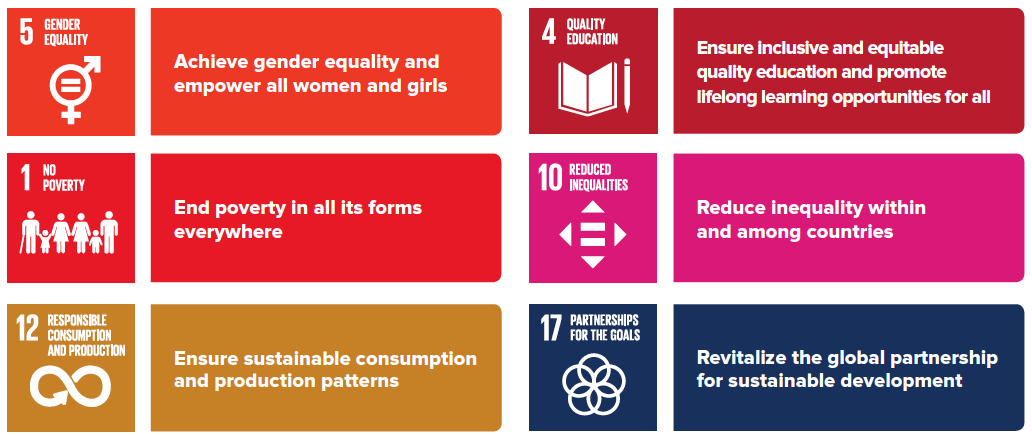
Our key focus is Goal 3
Goal 3: Ensure healthy lives and promote well-being for all ages
Goal 3 is centered on good health and well-being, calling for progress across prevention, treatment, and access to both specialist and primary care services.
Its indicators track progress in reducing maternal and infant mortality, communicable and non-communicable diseases, and environmental health challenges. It also aims to reduce disparities in health outcomes and access to services among different population groups.
Achieving Goal 3 would mean a world where health outcomes and access to health services are not determined by who you are, where you live, or your financial circumstances.
The Foundation contributes by restoring and improving people’s sight across 25 countries, conducting advocacy, and pursuing research initiatives that help strengthen health systems toward universal health coverage.
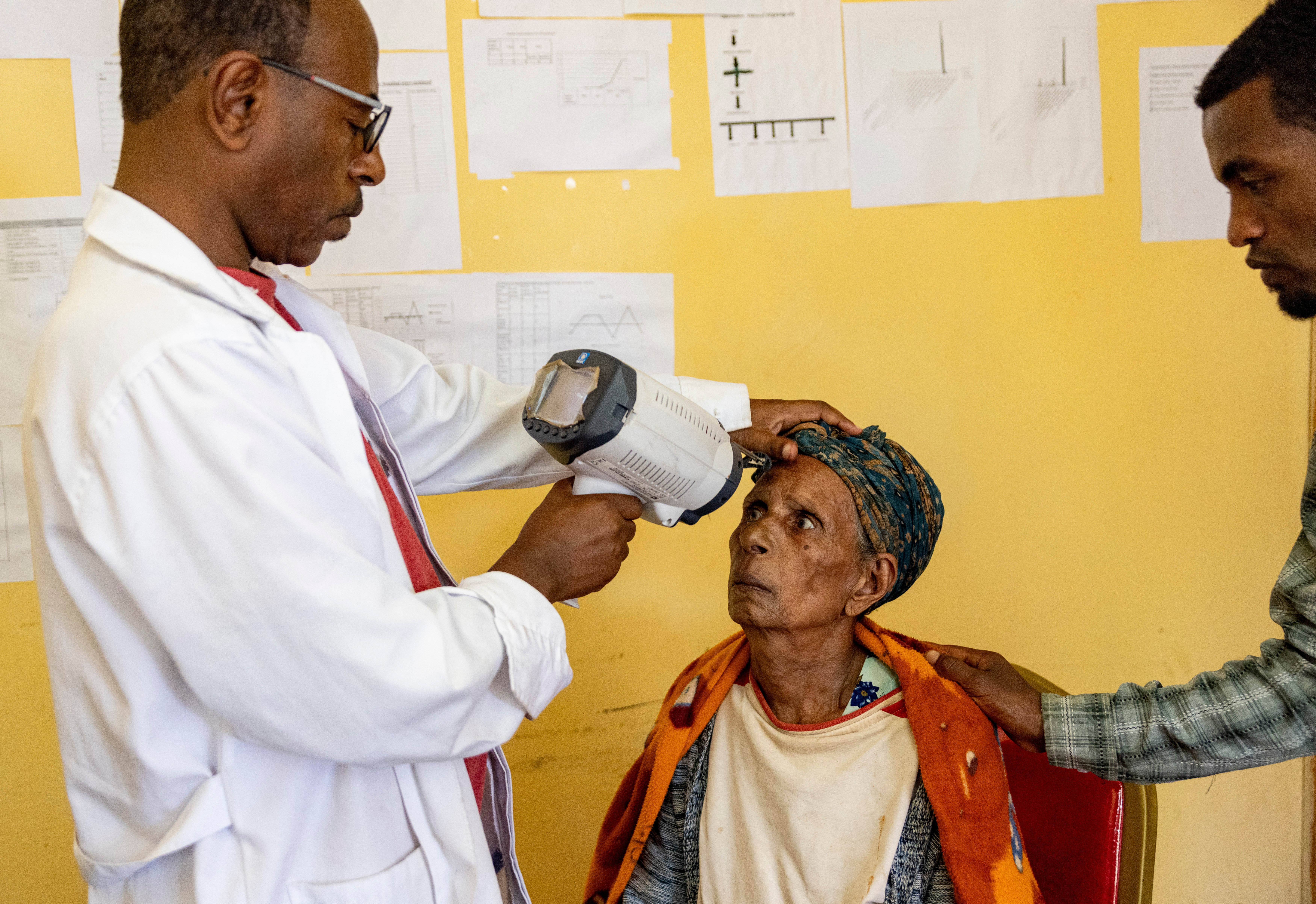
Our goals also contribute to to Goal 1, 4, 5, 8, 10, 12, and 17
Goal 1: End poverty in all its forms everywhere
The loss of sight acts as a severe impediment to people's livelihood and economic empowerment. Preventing the loss of, and improving sight is critical to lifting people out of extreme poverty and ending it in all its forms.
The Foundation contributes to ending poverty in many ways across our country programs, in our global and national level advocacy, and in many of our research projects.
Since its inception, The Foundation has prioritized sustainable and affordable eye care accessible to the most under-resourced and marginalized communities, who otherwise would not be able to access comprehensive eye care.
Goal 4: Ensure inclusive and equitable quality education and promote lifelong learning opportunities for all
Education, especially for children in primary and secondary years, provides an essential foundation for economic participation across the life course. Good vision is critical for participation in education and the lifelong benefits it provides to individuals, their families, and communities.
In recognition of gender disparities in vision and education, ensuring girls have access to quality eye care services underpins not only girls educational attainment but their future livelihoods, including their economic and social empowerment. Focusing on children’s eye health, especially girls, is essential for attaining the SDGs.
Goal 5: Achieve gender equality and empower all women and girls
Closing the gender gap that prevents women and girls from accessing eye health is an immediate area of focus for The Foundation.
Globally, women are 1.3 times more likely to be blind than men – meaning 55% of people who are vision impaired worldwide are women. This discrepancy also contributes to other disparities, including poverty, family and child-health, girls’ education as well as women’s economic empowerment.
In recognition of gender inequity and its crucial correlation to the SDGs, The Foundation is prioritising gender equity and working to promote gender equality through our programs, in our public communications, and in our business practices. The Foundation has launched an organization-wide gender strategy.
Goal 8: Promote sustained, inclusive and sustainable economic growth, full and productive employment and decent work for all
The attainment of SDG8 requires a concentration on improving people’s vision enabling them to have productive employment and improved livelihoods.
According to the latest Lancet Global Report, it is estimated that preventable sight loss cost the global economy £287.8 billion GBP in the year 2020 due to lost employment, with the greatest cost in East Asia (£62.9 billion GBP) and South Asia (£48.8 billion GBP). The report also estimated an economic productivity loss of £297.5 billion GBP (purchasing power parity) due to lost income in low and middle income countries.
Vision improves micro and macro level economic outcomes across urban and rural economies in the formal and informal sectors (where the poorest in need of eye-services work).
For instance, access to eye health services can improve the livelihood of workers who are engaged in agricultural production as farm or field workers. This in turn has the potential to improve crop production and quality, which positively impacts SDG1 (ending poverty) and SDG2 (better food security and nutrition).
In industrial settings, such as in garment factories, a pair of glasses can not only ensure people keep their jobs, but it can also increase productivity and income, improving workers’ health and well-being.
In many urban informal economies, micro-enterprises are enabled with improved vision, where people are empowered to run their own small business as a result of improved vision.
Goal 10: Reduce inequality within and among countries
The Foundation contributes to reducing inequality in many ways across our country programs, in our global and national level advocacy and in many of our research projects.
In addition to a strategic focus on gender equity, The Foundation prioritises reducing the gap in access to eye health services between low and high income countries as a priority over the next five years as it works towards zero prevalence in avoidable blindness and vision impairment.
Our work in Australia to close the gap in eye health between Aboriginal and Torres Strait Islander Australians and non-Indigenous Australians provides an example to demonstrate our targeted efforts in combating inequality.
Aboriginal and Torres Strait Islander Peoples are three times more likely to be blind than other Australians. We work with local Aboriginal community controlled health services to close the gap and advocate for Aboriginal and Torres Strait Islander rights.
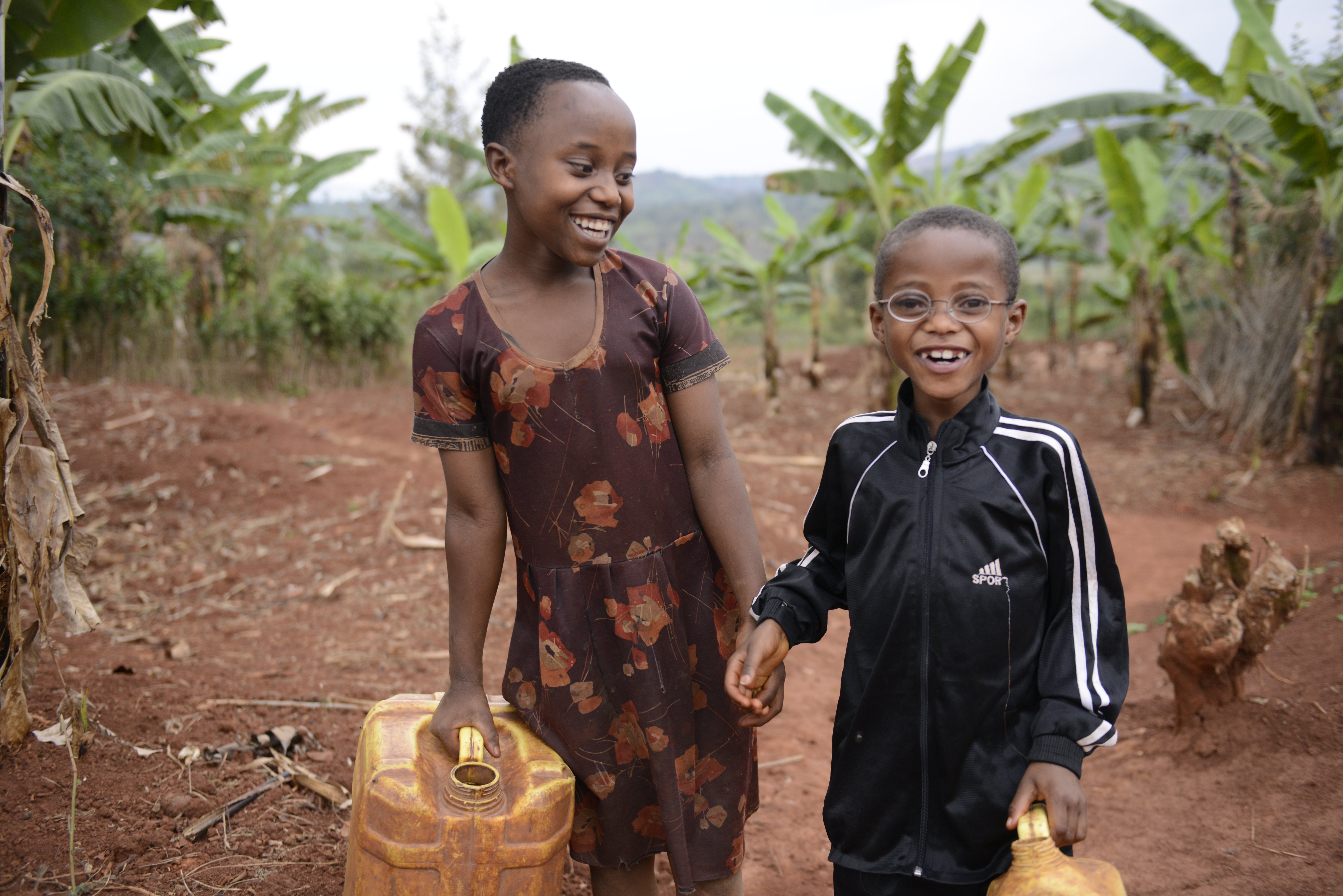
Goal 12: Ensure sustainable consumption and production patterns
The Foundation recognises the cross-cutting nature of sustainable consumption and production and its impact on the SDGs.
Our global procurement policy specifies the objective to support the achievement of the SDGs and the revised internal procurement framework and selection criteria considers the most positive environmental, social and economic outcomes across the full life cycle of a service or product.
Goal 17: Revitalize the global partnership for sustainable development
The SDGs require diverse financial support and collaboration between all government and non-government organisations, philanthropic foundations, and the private sector in order to attain the SDGs in low and middle income countries. The financing gap for this endeavour is estimated to be £181 – 217 trillion per year.
However, financing sustainable development is an exciting opportunity. Evidence shows that investing in the SDGs makes economic sense, with the United Nations estimating that achieving the SDGs could open market opportunities to the value of £8.7 trillion, while creating 380 million new jobs.
Such financial investments represent opportunities for building a better world together. The Foundation recognises that it cannot achieve its core mission of ending avoidable blindness by working in isolation. Our programs are delivered with local partners. The Foundation pursues strategic global partnerships with organizations who share or contribute to our mission. We work in collaboration with governments, non-government organizations, trusts and foundations, academic and research institutes, sector bodies and the private sector to create sustainable models of eye care delivery, whilst creating opportunities for economic empowerment, improved education and primary health care.
The Foundation also works to build innovative coalitions with technology providers, finance institutes, social impact investors, government entities, and private businesses.
Building coalitions where the governmental, social, business, and development goals combine – in new ways with innovative models – is essential if the global community is to work together to direct the resources and knowledge needed to deliver the SDGS.
Our commitment to the SDGs
The 2030 Agenda for Sustainable Development provides a transformative opportunity to create a better future for generations to come.
Equity was at the heart of Fred Hollows' work and remains the driving force behind his legacy—a legacy that has restored sight to over 2.5 million people across more than 25 countries. The 2030 Agenda echoes this vision, recognizing global disparities and calling for universal action to eliminate these differences.
The Foundation’s vision of a world where no one is needlessly blind or vision-impaired aligns with the SDGs and their central aim to leave no one behind. No one should have to live with avoidable blindness or vision impairment in the 21st century when we have affordable, proven solutions at hand. The Foundation is committed to doing better and leading by example.
Need more information about our sustainability activities?
If you need more information about our contribution to the Sustainable Development Goals, please fill out a contact form or email us at [email protected]
